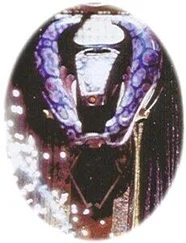Three months later two more Brits, this time English converts to Islam named Abu Bakr (aka Gerry Smith) and Mansoor Ahmed (known only as Stephen), were killed in a drone strike in the region. 109It later emerged that CIA spies had been tracking the various German and British terrorists for some time, waiting for the chance to kill them and foil their plot. At the time U.S. officials said that they were acting on “precise intelligence.” 110The robust and accurate nature of the CIA’s drone response to these terrorist threats speaks volumes to the level of their infiltration of the FATA and the agency’s ability to quickly target and kill suspected terrorists planning future attacks.
DRONES AND THE KILLING OF OSAMA BIN LADEN
Although drones did not kill bin Laden in May 2011, they did play a key role in his death. Bin Laden had last been seen fleeing from the caves of Tora Bora in Afghanistan into the neighboring FATA region during Operation Enduring Freedom in December 2001. From there his trail ran cold. Many assumed that the terrorist mastermind was hiding in the FATA region because the number two in al Qaeda, Ayman al Zawahiri (who was tracked in the region and almost killed by a drone in Damadola), was filmed walking with him sometime after 2001 in a mountainous setting; both were wearing Pashtun clothes and interacting with people who appeared to be Pashtuns.
But by 2008 the drone war had commenced in the FATA, and many Taliban and al Qaeda leaders had fled this sanctuary for safer grounds in Quetta and elsewhere. Bin Laden himself was too high value a target to move around a region that was filled with CIA spies. He was forced to flee the drones by moving to the neighboring North-West Frontier Province. There he was isolated from the war in Afghanistan in a massive, $1 million, concrete compound built in the Pakistani military-resort town of Abbottabad.
It proved all but impossible to find bin Laden in his hideout because he was so far from the FATA. To compound matters, the terrorist leader had learned to be cautious following the 2004 death of Taliban leader Nek Muhammad, who, as noted previously, was tracked by the CIA while speaking on a cell phone. Instead of phones, bin Laden relied on couriers to communicate. For years bin Laden, occasionally issuing a video statement mocking the Americans, remained hidden in his self-imposed prison on the top floor of his compound.
But the CIA and NSA were persistent and carefully monitored the cell phone communication among all known al Qaeda agents in Pakistan. In August 2010 an al Qaeda agent tripped up and called a mysterious courier who had not previously been tracked named Ahmed al Kuwaiti. After the phone call, the NSA was tasked with following Kuwaiti’s movements. Not realizing he was being traced, Kuwaiti drove to a large compound in Abbottabad that stood out because of its high walls. Curiosity aroused, the CIA began to monitor the mysterious mansion via high-flying spy satellites that used synthetic aperture radar and electro-optical cameras. The grainy pictures these satellites provided were not of sufficient resolution to tell who was living in the house. Although the satellites were good at filming static targets such as buildings, they could not film moving people; only drones could do that. Unfortunately, the Pakistanis did not allow the Americans’ slow-moving propeller-driven Predators and Reapers to operate outside the FATA.
Around this time the CIA brought in a top-secret stealth drone known as the RQ-170 Sentinel that was jet propelled, shaped like a mini B2 bomber, and built to avoid radar. It was not armed but had the ability to penetrate undetected deep into Pakistani airspace to Abbottabad, a sensitive military town located near the Pakistani capital. 111Soon after the mysterious compound was discovered, the drone was deployed to Abbottabad. According to the Washington Post , “Using unmanned planes designed to evade radar detection and operate at high altitudes, the agency conducted clandestine flights over the compound for months before the May 2 assault in an effort to capture high-resolution video that satellites could not provide. The aircraft allowed the CIA to glide undetected beyond the boundaries that Pakistan has long imposed on other U.S. drones, including the Predators and Reapers that routinely carry out strikes against militants near the border with Afghanistan.” 112
Having reached a 60–80 percent certainty that bin Laden was in the Abbottabad compound, the Obama administration, the CIA, and JSOC needed to formulate a plan to get him. 113This was no easy task because the compound was a well-built concrete structure located both deep in the Islamabad Defense Intercept Zone and adjacent to a Pakistan military base. The slow-moving Reaper drones were only allowed to operate in “kill boxes” in the FATA and were not allowed to fly into Pakistan proper. Even if they had had a larger flight radius, their Paveway guided bombs were not strong enough to destroy bin Laden’s compound. In addition, if the slow-moving, propeller-driven drones tried to penetrate the Islamabad security zone, they would be noticed by Pakistani radar and shot down. For these reasons, Obama and Gen. Bill McRaven, the head of JSOC, decided to use a dangerous helicopter-borne ground raid on the compound on the night of May 1–2, 2011.
As the SEALs from the JSOC based in Jalalabad, Afghanistan, penetrated Pakistani airspace in stealth versions of the Black Hawk helicopter and two larger Chinooks, RQ-170 drones flew overhead, monitoring the compound. When the helicopters arrived below, the drones provided high-resolution night-vision imagery of the SEALs landing at the compound and attacking. This imagery was sent to President Obama and national security team members, who were watching the events in Pakistan unfold on screen in the White House Situation Room. The stealth drones also used their eavesdropping equipment to monitor electronic transmissions among the Pakistanis, who had not been notified of the incursion.
Despite the odds against it, the deep raid into Pakistan was successful, and the SEALs managed to kill bin Laden and return to Afghanistan with his body. 114Although the Pakistanis did launch fighter jets at the last minute to intercept the invaders, they were too late; the Americans had already retreated to Afghanistan in their stealth helicopters.
The Pakistani military and intelligence communities were humiliated when they realized that bin Laden had been living close to one of their bases (no evidence has emerged to show the bin Laden worked with the Pakistanis) and that they had been unable to protect their airspace from deep incursion. Relations between the Pakistanis and the Americans once again soured, and in a special session of the Pakistani parliament, ISI chief Ahmed Shuja Pasha denounced the American raid. The Pakistanis promised to reevaluate their relationship with the Americans and subsequently closed down the drone air base at Shamsi and ordered U.S. personnel to leave it. (American personnel returned to the base soon thereafter.) Pakistan’s parliament also passed a resolution declaring that the drone strikes were a violation of sovereignty equivalent to the raid on bin Laden’s compound in Abbottabad. 115
But much good came out of the raid as well. The cache of information found in bin Laden’s computers enabled the CIA to use a drone to track and kill Atiyah abd al Rahman, the man who was promoted to al Qaeda’s number-two spot following bin Laden’s death. 116In fact there was a blitz of drone strikes in the FATA in the days and weeks after bin Laden’s death as the CIA exploited information found in the slain terrorist’s computers to strike at al Qaeda hideouts in the region. 117
DRONES HELP HUNT DOWN GADDAFI IN LIBYA
American drones also played a major role in the 2011 air war against the Libyan dictator Muammar Gaddafi. In the winter and spring of that year Libyan citizens joined the so-called Arab Spring, a region-wide movement that was toppling Middle Eastern dictators, and began to openly resist Gaddafi’s rule. In response, the dictator launched his troops on the rebels and promised to hunt them down like “rats.” Alarmed by the prospect of a mass slaughter of civilians, President Obama, with the aid of the British and French, decided to wage an air campaign to assist the outgunned anti-Gaddafi rebels. U.S. and NATO aircraft began targeting Gaddafi positions to bolster the popular uprising and prevent a massacre. This was to be a unique airborne war that the Obama administration could claim did not “involve the presence of U.S. ground troops, U.S. casualties or a serious risk thereof.” 118
Читать дальше












